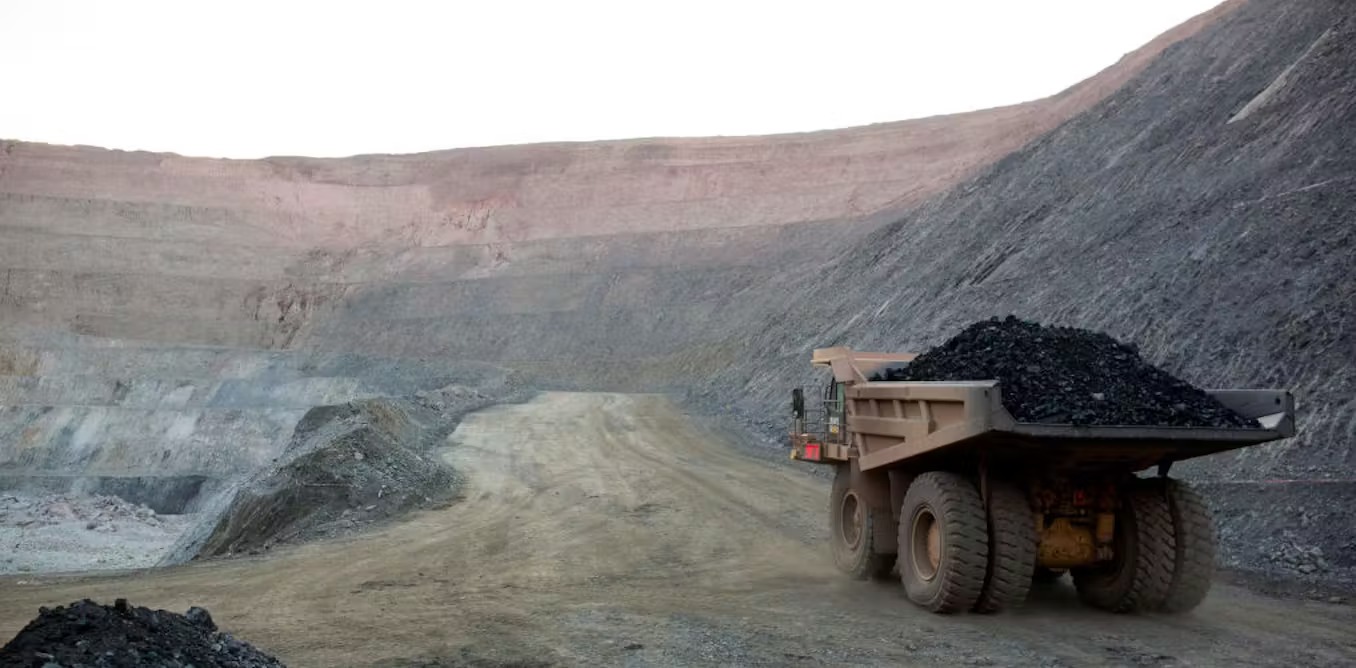BHP, the world's largest listed miner, reported its lowest first-half profit in six years at $5.08 billion, down 23% from last year but slightly above estimates. CEO Mike Henry confirmed the company is focused on organic growth, abandoning acquisition plans after scrapping a $49 billion bid for Anglo American.
The miner declared an interim dividend of 50 cents per share, the lowest since 2017, aligning with market expectations. Iron ore earnings, BHP’s primary profit driver, fell 26% to $7.2 billion due to lower prices and cyclone-related disruptions in Australia, prompting a downward revision of its annual iron ore output forecast.
BHP remains optimistic about global demand recovery, citing central bank rate cuts and early economic rebound signs in China, along with resilient U.S. performance and India's strong growth. Copper operations surged 44% to $5 billion, fueled by tight supply, Chinese stimulus, and U.S. interest rate cuts. The company plans to invest $4.7 billion in copper expansion by June 2025, boosting output by 24% over three years.
Despite global trade uncertainties and potential tensions, BHP's exposure to U.S. tariffs is minimal, with the U.S. accounting for only 3% of its revenue. The miner expects global market adjustments if Canadian potash faces U.S. trade barriers. BHP’s focus on iron ore and copper, combined with global monetary easing, signals potential growth, even as risks from trade conflicts loom.



 Microsoft Unveils Massive Global AI Investments, Prioritizing India’s Rapidly Growing Digital Market
Microsoft Unveils Massive Global AI Investments, Prioritizing India’s Rapidly Growing Digital Market  EssilorLuxottica Bets on AI-Powered Smart Glasses as Competition Intensifies
EssilorLuxottica Bets on AI-Powered Smart Glasses as Competition Intensifies  Nvidia Develops New Location-Verification Technology for AI Chips
Nvidia Develops New Location-Verification Technology for AI Chips  Air Force One Delivery Delayed to 2028 as Boeing Faces Rising Costs
Air Force One Delivery Delayed to 2028 as Boeing Faces Rising Costs  Westpac Director Peter Nash Avoids Major Investor Backlash Amid ASX Scrutiny
Westpac Director Peter Nash Avoids Major Investor Backlash Amid ASX Scrutiny  Trello Outage Disrupts Users as Access Issues Hit Atlassian’s Work Management Platform
Trello Outage Disrupts Users as Access Issues Hit Atlassian’s Work Management Platform  SK Hynix Considers U.S. ADR Listing to Boost Shareholder Value Amid Rising AI Chip Demand
SK Hynix Considers U.S. ADR Listing to Boost Shareholder Value Amid Rising AI Chip Demand  JD.com Pledges 22 Billion Yuan Housing Support for Couriers as China’s Instant Retail Competition Heats Up
JD.com Pledges 22 Billion Yuan Housing Support for Couriers as China’s Instant Retail Competition Heats Up  United Airlines Flight to Tokyo Returns to Dulles After Engine Failure During Takeoff
United Airlines Flight to Tokyo Returns to Dulles After Engine Failure During Takeoff  Trump’s Approval of AI Chip Sales to China Triggers Bipartisan National Security Concerns
Trump’s Approval of AI Chip Sales to China Triggers Bipartisan National Security Concerns  ANZ Faces Legal Battle as Former CEO Shayne Elliott Sues Over A$13.5 Million Bonus Dispute
ANZ Faces Legal Battle as Former CEO Shayne Elliott Sues Over A$13.5 Million Bonus Dispute  GameStop Misses Q3 Revenue Estimates as Digital Shift Pressures Growth
GameStop Misses Q3 Revenue Estimates as Digital Shift Pressures Growth  Apple App Store Injunction Largely Upheld as Appeals Court Rules on Epic Games Case
Apple App Store Injunction Largely Upheld as Appeals Court Rules on Epic Games Case  Intel’s Testing of China-Linked Chipmaking Tools Raises U.S. National Security Concerns
Intel’s Testing of China-Linked Chipmaking Tools Raises U.S. National Security Concerns  Azul Airlines Wins Court Approval for $2 Billion Debt Restructuring and New Capital Raise
Azul Airlines Wins Court Approval for $2 Billion Debt Restructuring and New Capital Raise  China Adds Domestic AI Chips to Government Procurement List as U.S. Considers Easing Nvidia Export Curbs
China Adds Domestic AI Chips to Government Procurement List as U.S. Considers Easing Nvidia Export Curbs  EU Court Cuts Intel Antitrust Fine to €237 Million Amid Long-Running AMD Dispute
EU Court Cuts Intel Antitrust Fine to €237 Million Amid Long-Running AMD Dispute 































